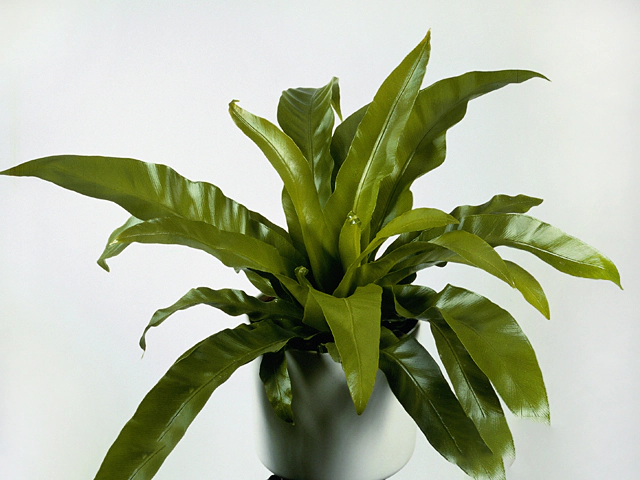Asplenium antiquum

| Flower scent | Unscented |
| Leaf type | Foliage leaf |
| Winter hardness | Not hardy (USDA-zone 9,10,11) |
| Leaf, general shape | Linear |
| Structure (tissues) | Herbaceous |
| Leaf size | 30 - 40 cm |
| Plant, growth type | Erect |
| Toxicity (if consumed) | Not or barely |
The Asplenium antiquum, commonly known as the Spleenwort or Bird's Nest Fern, is a stunning addition to any indoor garden. With its lush foliage and unique growth pattern, this fern is a favorite among plant enthusiasts. However, it's important to note that the Spleenwort is not suitable for all climates, as it is not hardy in USDA-zones 9, 10, and 11.
One notable characteristic of the Spleenwort is its unscented flowers, which may leave some gardeners searching for a fragrant bloom disappointed. However, the fern makes up for this with its beautiful foliage. The leaves are linear in shape and can grow to be 30-40 cm long, creating an elegant display of vibrant green.
In terms of structure, the Spleenwort is herbaceous, boasting tissues that are soft and flexible. This characteristic gives the plant a delicate and graceful appearance that is sure to catch the eye. Additionally, the growth type of this fern is erect, meaning it grows upwards rather than sprawling horizontally like some other fern species.
One important consideration for those interested in adding the Spleenwort to their collection is its toxicity. Fortunately, this fern is not or barely toxic if consumed by humans or animals. This makes it a great choice for households with curious pets or small children, as it poses little risk if ingested accidentally.
In terms of its sunlight requirements, the Spleenwort prefers partial shade. It is best to place it in a location where it can receive some direct sunlight in the morning or late afternoon, but is protected from intense midday sun. This fern also thrives in well-draining soil, so make sure to use a suitable potting mix that allows excess water to drain away.
When it comes to watering, the Spleenwort requires moderate levels of moisture. It is important to keep the soil consistently moist but not soggy, as overwatering can lead to root rot. Regularly checking the soil's moisture level and adjusting watering accordingly will help ensure the fern's health and longevity.
Propagation of the Spleenwort is most commonly done through division. As the plant grows, it produces offshoots or "pups" that can be carefully separated from the main plant and replanted in a new pot. This allows gardeners to expand their collection or share the beauty of this fern with others.
Although native to Southeast Asia, the Spleenwort can be successfully cultivated in indoor environments worldwide. Its unique foliage and ease of care make it a popular choice among houseplant enthusiasts. Whether used as a focal point in a greenery-filled corner or as part of a collection, the Spleenwort adds a touch of elegance and natural beauty to any space.
Market availability index by month:
| Jan. | Feb. | Mar. | Apr. | May | Jun. | Jul. | Aug. | Sep. | Oct. | Nov. | Dec. |
|---|---|---|---|---|---|---|---|---|---|---|---|
| 4 | 3 | 3 | 3 | 3 | 3 | 3 | 3 | 3 | 3 | 3 | 3 |